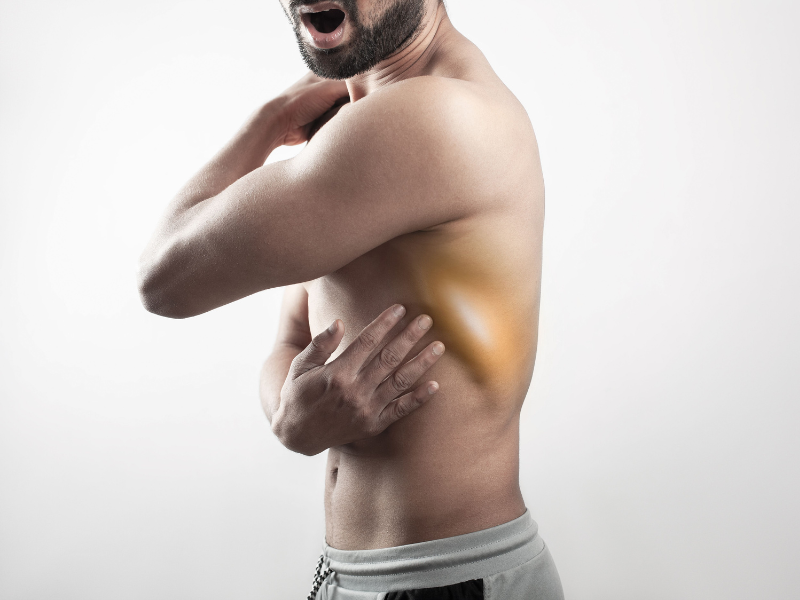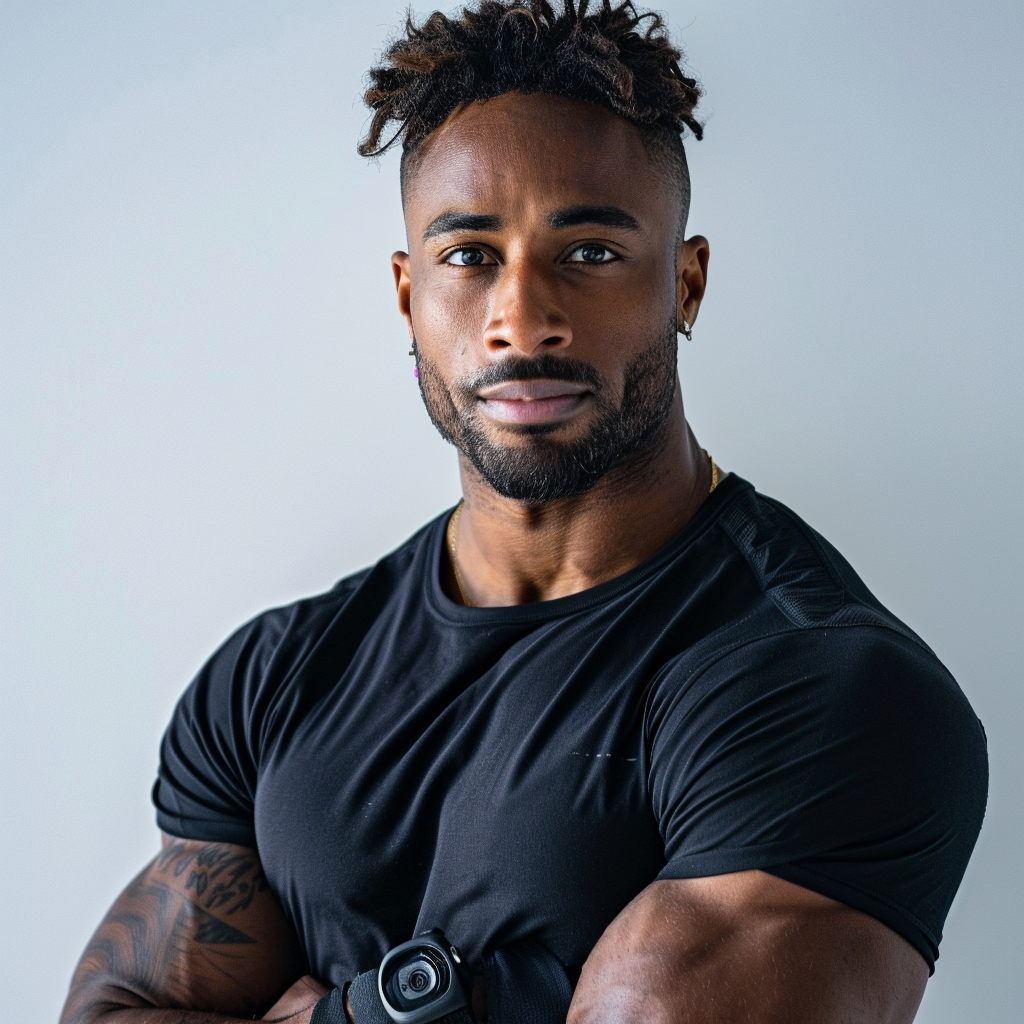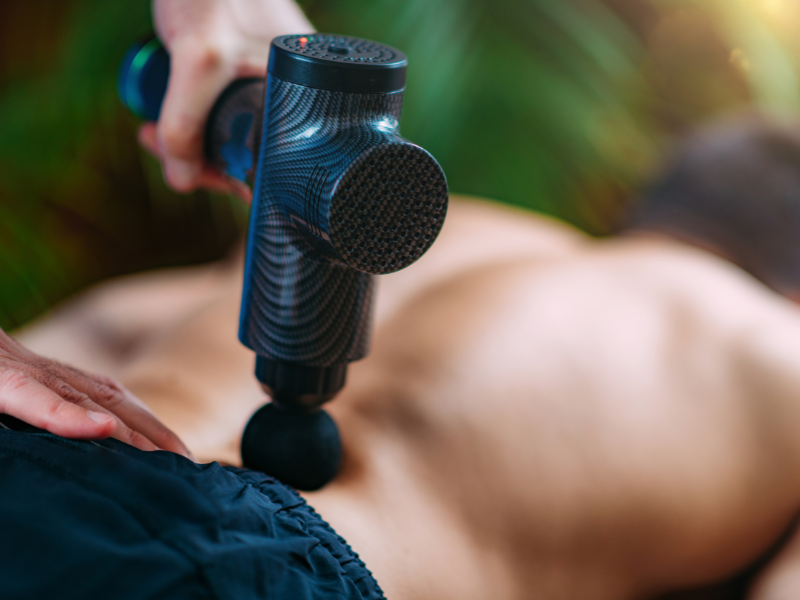




This is a question that has certainly popped up in all our minds the day following a tiring workout. When our body feels weak or is still aching from the previous exercise session, we’re often unsure of whether we should test our limits, take some time to rest, or figure out how to stagger the workouts.
So, can you work out when sore? The answer to this question is not so straightforward, and hence why we’re diving deeper into this topic to give you workout tips on how to approach this dilemma in a safe manner. Read on to find out more!
What Causes Your Muscles To Be Sore After a Workout?
Soreness after a workout is completely normal and even expected, and is said to be the result of microscopic tears or inflammation in the tendons and muscles. These are tiny injuries in the muscle fiber and connective tissue [1].
What Is Delayed-Onset Muscle Soreness (DOMS)?

Delayed-onset muscle soreness or DOMS is a common condition that is typically experienced 12-24 hours after a workout. But you experience peak discomfort usually a few more days after. It is most often the result of movements like jumping, walking downhill, strength training, step aerobics, etc. or if you’ve attempted something new in your workout routine. DOMS can be treated like any other muscle soreness but might just have extra symptoms like muscle swelling and stiffness caused by micro tears and damage to muscle tissues [2].

When to Exercise Through Pain and When to Avoid It

It is important to try and gauge what might be the cause of your soreness in order to understand if going ahead with exercising can be productive. For example, if soreness in your leg is preventing you from having the right form while doing squats, then it can cause greater damage. Or, if you have ramped up the intensity of your workout too quickly and not in a progressive manner, the muscles will be overworked. They require rest and recovery before resuming.
So is it safe to train through the pain?
The answer depends on the type of pain you’re experiencing and the causes. If the pain is caused by too much emphasis on a joint or muscle, then your workout just needs some modification, or your technique requires correction. It is still good to keep your body active instead of entirely stopping exercising.
Therefore, consult a physical therapist who can recommend a safe way of exercising within your range of motion, which can aid in recovery. It is important to not push yourself to the point where a small strain can become a serious issue. So identifying if the pain is due to soreness or injury is essential.
How to Recognize an Injury
- Visible swelling, bruising, or radiating pain
- If the pain sustains for longer than three days or keeps returning
- A sharp, acute pain or very uncomfortable feeling while doing a specific movement
- Range of motion and joint mobility is restricted during everyday activities
Often people push themselves when feeling intense pain under the assumption the belief that it is an indicator for muscle building. While the repairing and rebuilding of muscle tissues can result in soreness and be a sign for growth, this is not always the case [3]. If you’re experiencing any of the above symptoms, it is imperative that you press pause on your exercise routine until you can consult with a medical professional.
You may also like:
Push Workout For Muscle Growth
The Best Pull Day Workout Routine To Target The Right Muscles
How to Relieve Sore Muscles

Now that we’ve learned how muscle soreness occurs and how we can go about our exercise regimen, we dive into the measures you can take to prevent soreness in the first place.
Massage
Aside from feeling heavenly and relaxing, massages promote blood circulation and help reduce inflammation in the body. A study done on over 100 participants proves that massages can have a visible effect on DOMS symptoms and improve overall flexibility [4]. It helps in treating aches, pains and knots that build up over time too [5].
Stretching or Dynamic Stretching
While static stretching is ideal for cooling down and relaxing, dynamic stretching mimics the movement of the exercises by contracting and elongating the muscles. This properly warms the body up for what is to come, as it will be ready to take on similar muscular movements on a higher intensity level once you begin your workout. Dynamic stretching activates both the upper body and lower body, reducing the risks of injury and enhancing performance [6].
Foam rollers
Foam rollers and massage guns are tools that can also help with promoting blood flow and reducing inflammation. According to this 2020 study that tested participants post an intense workout routine, foam rollers are shown to alleviate muscle soreness and fatigue while reducing the impact of the DOMS symptoms [7].
Active Recovery
Active recovery refers to low-intensity exercises that keep the body and its muscle groups activated without having to exert them. Basically, the routine you would do to recover from muscle tissue damage caused higher-intensity exercises. It helps with restoring the muscles, increase blood flow, and remove toxins that build up during exercise [8].
Final Thoughts
We hope that this article clarifies all the questions you have surrounding muscle soreness and muscle recovery for exercising. Remember to keep these tips in mind while going about your next workout, and listen to your body while curating any fitness routine. For more recommendations on how you can exercise safely and effectively, check out the library of workout videos at the JustFit app!
Is it better to work out when sore or rest?
Can I work out with muscle soreness?
Does soreness mean you're building muscle?
Bradley, C. (2024, July 30). 11 reasons a sports massage can change your life!. Bodytonic Clinic. Available at: https://bodytonicclinic.co.uk/11-reasons-sports-massage-can-change-your-life/
Cheung, K., Hume, P., & Maxwell, L. (2003). Delayed onset muscle soreness : treatment strategies and performance factors. Sports medicine (Auckland, N.Z.), 33(2), 145–164. Available at: https://doi.org/10.2165/00007256-200333020-00005
Cheong, T. (2022, March 30). How does muscle recovery work?. Sportsbalm. Available at: https://www.sportsbalm.com/en/how-does-muscle-recovery-work/
Davis, H. L., Alabed, S., & Chico, T. J. A. (2020). Effect of sports massage on performance and recovery: a systematic review and meta-analysis. BMJ open sport & exercise medicine, 6(1), e000614. Available at: https://doi.org/10.1136/bmjsem-2019-000614
Iwata, M., Yamamoto, A., Matsuo, S., Hatano, G., Miyazaki, M., Fukaya, T., Fujiwara, M., Asai, Y., & Suzuki, S. (2019). Dynamic Stretching Has Sustained Effects on Range of Motion and Passive Stiffness of the Hamstring Muscles. Journal of sports science & medicine, 18(1), 13–20. Available at: https://pubmed.ncbi.nlm.nih.gov/30787647/
Pearcey, G. E., Bradbury-Squires, D. J., Kawamoto, J. E., Drinkwater, E. J., Behm, D. G., & Button, D. C. (2015). Foam rolling for delayed-onset muscle soreness and recovery of dynamic performance measures. Journal of athletic training, 50(1), 5–13.Available at: https://doi.org/10.4085/1062-6050-50.1.01
Millard, E. (2022, March 24). What is active recovery, and how does it maximize your workout?. GoodRx. Available at: https://www.goodrx.com/well-being/movement-exercise/active-recovery
Li, X., Chen, M., Yao, Z., Zhang, T., & Li, Z. (2022). Dietary inflammatory potential and the incidence of depression and anxiety: a meta-analysis. Journal of health, population, and nutrition, 41(1), 24.Available at: https://doi.org/10.1186/s41043-022-00303-z





